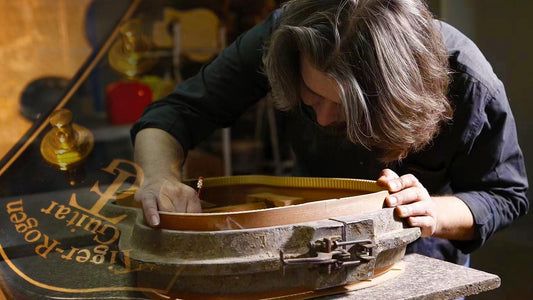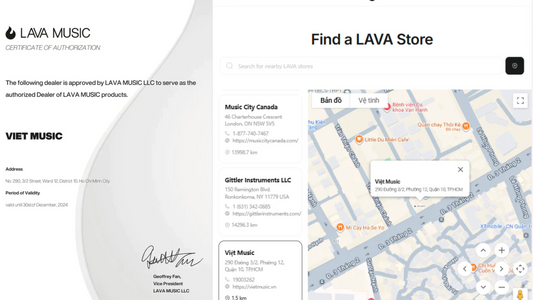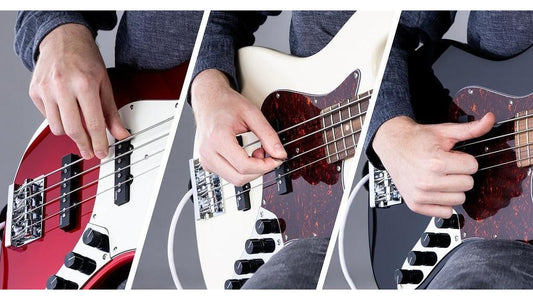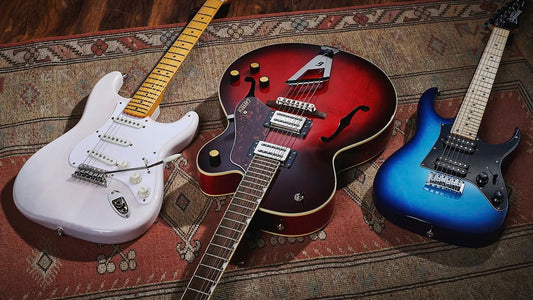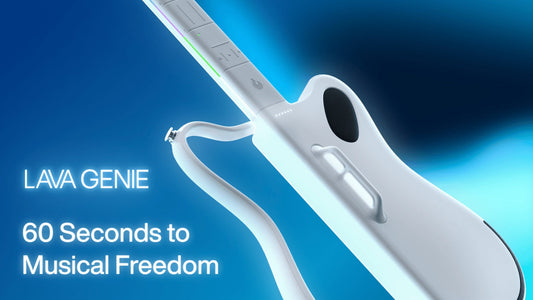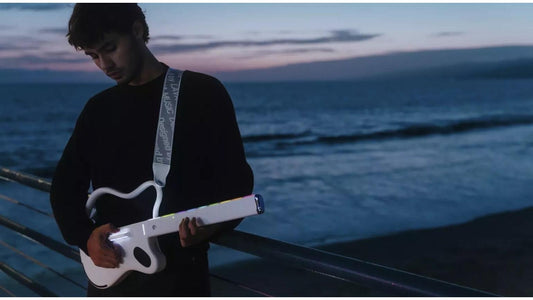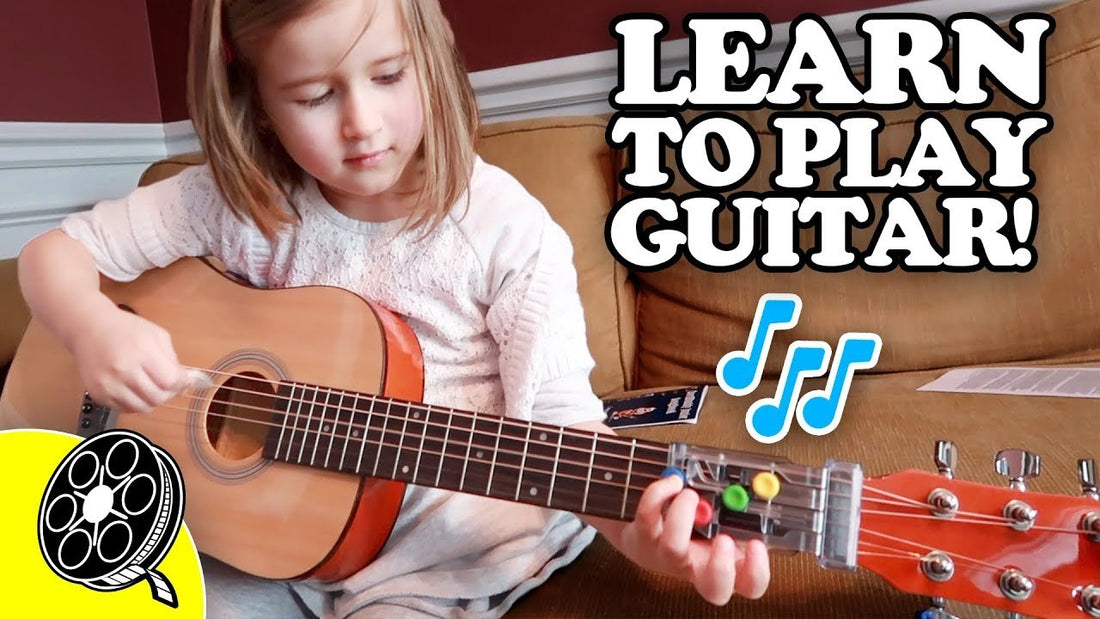
Chọn Đàn Guitar Cho Trẻ Em
Chọn một cây đàn guitar cho người mới bắt đầu thường liên quan đến việc cân đối ngân sách của bạn với mong đợi của con bạn. Với một chút kiến thức, bạn sẽ tìm được một mẫu đàn có khả năng chơi, âm thanh và ngoại hình cần thiết để làm hài lòng tất cả mọi người. Hãy đọc tiếp để biết các mẹo quan trọng giúp việc mua sắm đàn guitar dễ dàng hơn.
Nên chọn guitar điện hay guitar thùng
Mặc dù đàn mandolin và ukulele đã được yêu thích trở lại, nhưng đối với một đứa trẻ mới bắt đầu học, guitar là nhạc cụ phổ biến và linh hoạt nhất. Nó có hai loại cơ bản: guitar điện hoặc guitar thùng và lựa chọn giữa chúng là bước đầu tiên. Mặc dù mỗi loại đều có giá trị như một cây đàn bắt đầu, nhưng việc chọn loại nào tùy vào sở thích của con bạn.
Hầu hết những đứa trẻ gắn bó với quá trình học tập đều được khuyến khích duy trì đam mê khi chúng bắt đầu tạo ra âm thanh của bản nhạc mà chúng yêu thích và mong muốn chơi tốt hơn. Để làm được điều này, chúng cần một cây đàn có âm thanh và khả năng chơi tốt. Nếu đàn nghe có vẻ tệ và khó chơi thì đó là một lựa chọn đàn không tốt.
Chọn một kích thước
Cách tốt nhất để tìm kích thước phù hợp là xoay một vòng cây đàn guitar để xem có phù hợp không. Hoặc có một số quy tắc chính sau:
• 30” (76cm)cho lứa tuổi 4-6
• 34” (86cm) dành cho lứa tuổi 6-9
• 36” (91cm) cho lứa tuổi 9-12
• Tiêu chuẩn cho 12 tuổi trở lên
Guitar điện cho trẻ em
Guitar điện có phần dễ chơi hơn guitar thùng. Chiều cao giữa dây và bàn phím (được gọi là action) thấp hơn trên đàn điện, yêu cầu bấm ngón nhẹ hơn. Action thấp hơn sẽ dễ dàng hơn đối với những ngón tay non nớt không thể tạo ra áp lực để chơi các nốt rõ ràng mà không bị căng.
Đối với những người có mong muốn cháy bỏng được chơi bốc lửa, cháy bỏng với cây đàn, một cây đàn guitar điện là điều cần thiết. Đàn guitar điện gắn liền với nhạc rock, alternative, metal và hầu hết nhạc pop, trong khi guitar thùng nghiêng về hướng nhạc đồng quê, bluegrass và dân gian. Tất nhiên, có rất nhiều trường hợp ngoại lệ.
Đàn guitar điện có bàn phím bằng gỗ phong Squier Mini Stratocaster mang đến hình thức, cảm giác và âm thanh của một cây đàn guitar rock tinh túy — Stratocaster — với kích thước thân thiện với người mới bắt đầu.
Thang âm ngắn 22-¾” (56cm), cần đàn có 20 phím đàn là lý tưởng cho bàn tay nhỏ. Với ba pickup cuộn dây đơn, điều khiển âm lượng và âm thanh chính, cần đàn bằng gỗ thích và ngựa đàn hardtail, nó tạo ra âm thanh Fender tươi sáng và giữ đúng giai điệu.
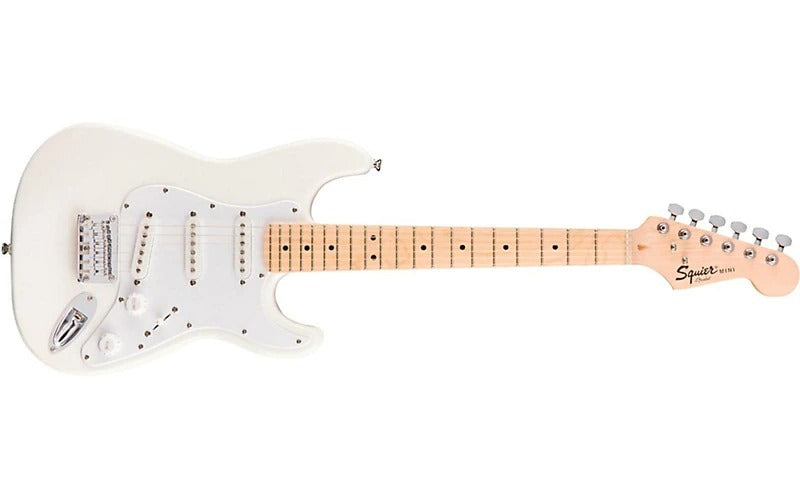
Squier Mini Stratocaster tỷ lệ 3/4" là kích thước hoàn hảo dành cho các rocker nhỏ tuổi. Nó cũng có giá cả phải chăng và phù hợp nhạc rock cổ điển.
Mặt khác, guitar điện có thể đắt hơn guitar thùng khi bạn tính đến giá của bộ khuếch đại guitar . Chúng cũng ồn ào hơn. Trẻ em có thể thích quay màn trình diễn “Chuyến tàu điên” của Ozzy lên đến 10, nhưng bố mẹ thì sao? Điều này có thể được bỏ qua với tai nghe cắm vào bộ khuếch đại, nhưng đó lại là một khoản chi phí khác và có thể sẽ dẫn đến trải nghiệm kém hài lòng hơn đối với đứa trẻ muốn bùng nổ hơn.
Các gói giá trị guitar điện thân thiện với ngân sách và đi kèm với tất cả các tính năng bổ sung, thường bao gồm cả bộ khuếch đại. Ngoài việc phỏng đoán sự phù hợp của amp và guitar, tất cả những phụ kiện guitar đi kèm đó sẽ hạn chế tổng đầu tư của bạn.
Đàn guitar thùng cho trẻ em
Guitar thùng dành cho người mới bắt đầu có xu hướng hợp túi tiền hơn vì không cần đầu tư bộ khuếch đại. Điều này làm cho chúng trở thành một lựa chọn tốt cho trẻ em không biết chắc mình có chơi lâu dài hay không. Một khoản đầu tư ban đầu nhỏ hơn sẽ dễ dàng hơn nếu con bạn quyết định không tiếp tục chơi. Nhưng một lần nữa, hãy nhớ rằng một nhạc cụ có âm thanh hay và chơi tương đối dễ dàng sẽ có nhiều khả năng thu hút trẻ em hơn. Một cây đàn guitar giá quá rẻ, chơi khó và không lên dây hoặc giữ dây sẽ nhanh chóng bị bỏ rơi.
Do action cao ở các cây đàn này, trẻ em phải ấn dây xuống mạnh, điều này có thể dẫn đến đau ở các đầu ngón tay. Những vết phồng rộp trên ngón tay có thể ngăn cản việc luyện tập. Nhưng sự kiên trì cuối cùng sẽ được đền đáp bằng đôi bàn tay khỏe hơn, những đầu ngón tay chai sạn và sự khéo léo tăng lên. Bạn sẽ thường nghe những người chơi guitar nói rằng quá trình chuyển đổi từ đàn acoustic sang đàn điện dễ dàng hơn là ngược lại.
Chọn một cây đàn guitar dây nylon có thể giúp bạn bắt đầu chơi dễ dàng hơn. Nhưng cuối cùng, hầu hết các nghệ sĩ guitar sẽ muốn chơi một cây guitar dây thép.
Sự lựa chọn cuối cùng nên để cho trẻ chọn. Bé muốn chơi đàn guitar classic (dây nylon) với âm thanh nhẹ nhàng hơn, phù hợp với nhạc cổ điển cần học tập bài bản, lâu dài hơn hay bé muốn đàn guitar dây sắt, tiếng vang vọng, sôi nổi, dễ học, dễ chơi hơn?
Đối với đàn điện, độ hoàn thiện và kiểu dáng có thể ít có ý nghĩa hơn đối với cha mẹ, nhưng đối với trẻ em, điều đó có thể quyết định tần suất chúng chơi và luyện tập. Hình dạng và kích thước cơ thể rất quan trọng vì những lý do thực tế. Tùy thuộc vào kích thước của con bạn, bé có thể không chơi được một cây đàn guitar cỡ lớn. Một cây đàn guitar có quy mô nhỏ hơn có thể phù hợp hơn.
Đối với người mới chơi guitar đang thể hiện sự cam kết chơi lâu dài nhiều hơn, bạn có thể muốn xem xét một cây đàn tốt hơn mang lại âm thanh, tính linh hoạt và khả năng chơi tốt hơn.
LX1E Little Martin Acoustic-Electric có mặt trên bằng gỗ thông Sitka chắc chắn cho âm thanh sắc nét trong khi thân đàn 0-14 được sửa đổi khiến nó trở thành lựa chọn tốt cho cả học sinh nhỏ tuổi và khách du lịch. Nó có thể được chơi mà không cần cắm điện, nhưng khi học sinh của bạn đã sẵn sàng chơi với những người khác trong một môi trường được khuếch đại, thì Little Martin sẽ rất phù hợp với thiết bị điện tử Fishman trên bo mạch.
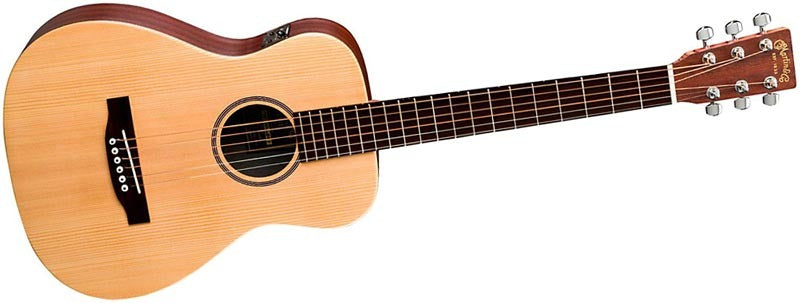
Vừa là nhạc cụ sinh viên vừa là nhạc cụ du lịch tuyệt vời, The Little Martin Acoustic-Electric có thang đo 23” rất phù hợp với những người có bàn tay nhỏ hơn.
Những cây guitar acoustic kích thước tiêu chuẩn có thể gây khó khăn cho những người chơi nhỏ nhất. Một lựa chọn là một mô hình với cơ thể nông hơn. Mặc dù âm thanh và âm thanh phát ra có thể không mạnh mẽ như đàn acoustic dreadnought kích thước đầy đủ, nhưng thân đàn có đường viền hoặc kiểu dáng thanh mảnh có thể thân thiện với trẻ em hơn.
Xem thêm:
